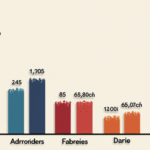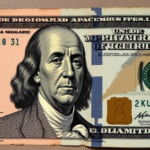Introduction
Mexico’s economy is not doing well, as indicated by the Inegi’s Cyclical Indicators showing a contraction phase. This does not help the official narrative that everything is going well.
The Official Narrative
One of the mirrors the government likes to sell is the level of remittances, which are not a government success but are now also declining.
With the inability to boast about remittances, the official narrative clings to the strength of the exchange rate, another indicator unrelated to government management.
The Weak Dollar and Global Implications
Clinging to the illusion of a strong peso as evidence that everything is going well prevents attention from being paid to a phenomenon that could be counterproductive at this time.
The tariff policy of the U.S. President already hints at the possibility of unleashing a trade war, with the currency market potentially becoming one of its battlefields.
The U.S. dollar, the world’s primary reserve currency, has significantly weakened, as shown by its measurement against a basket of currencies, such as the DXY Index. This index has experienced a 10.8% decline in the first half of this year, its worst performance since 1973.
Fears about fiscal policy, consequences of tariffs, potential monetary relaxation, and other politically-induced conditions negatively affecting U.S. imports have contributed to the dollar’s weakness.
The Chinese Yuan and Export Competitiveness
In the basket of currencies, there is one currency that has behaved similarly to the dollar, depreciating significantly and providing a competitive advantage for its country’s exports.
This currency is the Chinese renminbi, which has depreciated at a rate close to that of the dollar.
To understand the proportion, consider these comparisons of the peso against other currencies:
- The peso has lost 3.2% against the euro over the past six months.
- The peso has gained 9.6% against the U.S. dollar.
- The peso has gained 7.8% against the Chinese renminbi.
In trade terms, a more expensive peso relative to the dollar raises the price of Mexican exports, while a cheaper renminbi lowers the cost of Chinese products.
Historical Context: Currency Manipulation
China has a history of artificially devaluing its currency to boost competitiveness, which is now advantageous as the U.S. imposes higher tariffs.
In the U.S., certain government policies have facilitated this currency depreciation, indirectly benefiting domestic production.
Key Questions and Answers
- Q: What is the current state of Mexico’s economy? A: Mexico’s economy is not performing well, as shown by the Inegi’s Cyclical Indicators.
- Q: How does the official narrative portray Mexico’s economy? A: The official narrative attempts to highlight positive aspects, such as remittances and a strong peso, despite evidence of contraction.
- Q: What factors have contributed to the U.S. dollar’s weakness? A: Factors include fiscal policy concerns, tariff consequences, potential monetary relaxation, and politically-induced conditions negatively affecting U.S. imports.
- Q: How has the Chinese renminbi influenced global trade dynamics? A: The renminbi’s depreciation has given Chinese exports a competitive advantage, while the weakened U.S. dollar has increased the price of Mexican exports.






